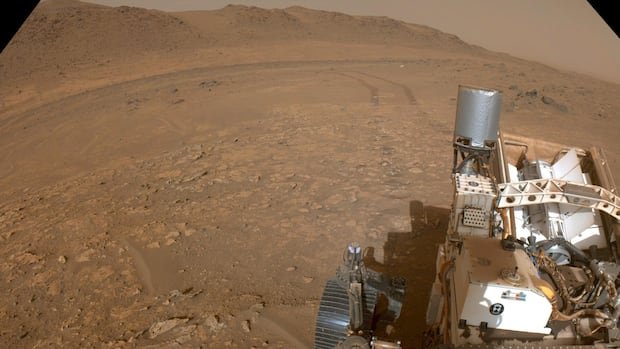Excitement stirs among scientists regarding the most recent geological findings that potentially hint at the presence of life on Mars. However, the enigmatic Red Planet continues to keep its secrets well-guarded, leaving room for non-life interpretations of the observed formations.
Geologist Joel Hurowitz highlighted in a recent discussion on ‘Quirks & Quarks’ that the Perseverance rover unearthed a significant rock in an area that once housed a river delta flowing into an ancient Martian lake.
Of particular interest are the discovery of vivianite and greigite in the delta, typically associated with microbial activity in terrestrial soils, sparking enthusiasm about the possibility of life on Mars. Yet, these chemicals can also form through non-biological processes, leaving the evidence inconclusive.
Since the 19th century, Mars has tantalized astronomers with hints of potential life, with Percival Lowell speculating about artificial canals on the planet. However, subsequent robotic missions in the 20th century debunked Lowell’s theories, revealing a barren landscape reminiscent of the moon.
While no definitive evidence of Martian life has been found on the surface, recent discoveries by NASA’s Curiosity rover, including the detection of large organic molecules, continue to fuel the debate about the existence of life beyond Earth.
Exploring the prospect of life beneath Mars’ surface, microbial biogeochemist Karen Lloyd discusses in her book ‘Interterrestrials’ the likelihood of microbial life thriving deep underground, similar to Earth’s subsurface ecosystems.
With the possibility of liquid water existing beneath Mars’ permafrost layer, the Martian crust presents a promising environment for microbial life to flourish, raising intriguing possibilities for future exploration.
Looking ahead to space exploration beyond Mars, the vast number of exoplanets orbiting distant stars suggests that life could exist in unexpected places, possibly thriving underground where conditions are more favorable.
As NASA prepares for future missions to the moon and Mars, considerations for drilling deep into planetary surfaces may become essential for uncovering potential underground life forms, expanding the horizons of space exploration.

